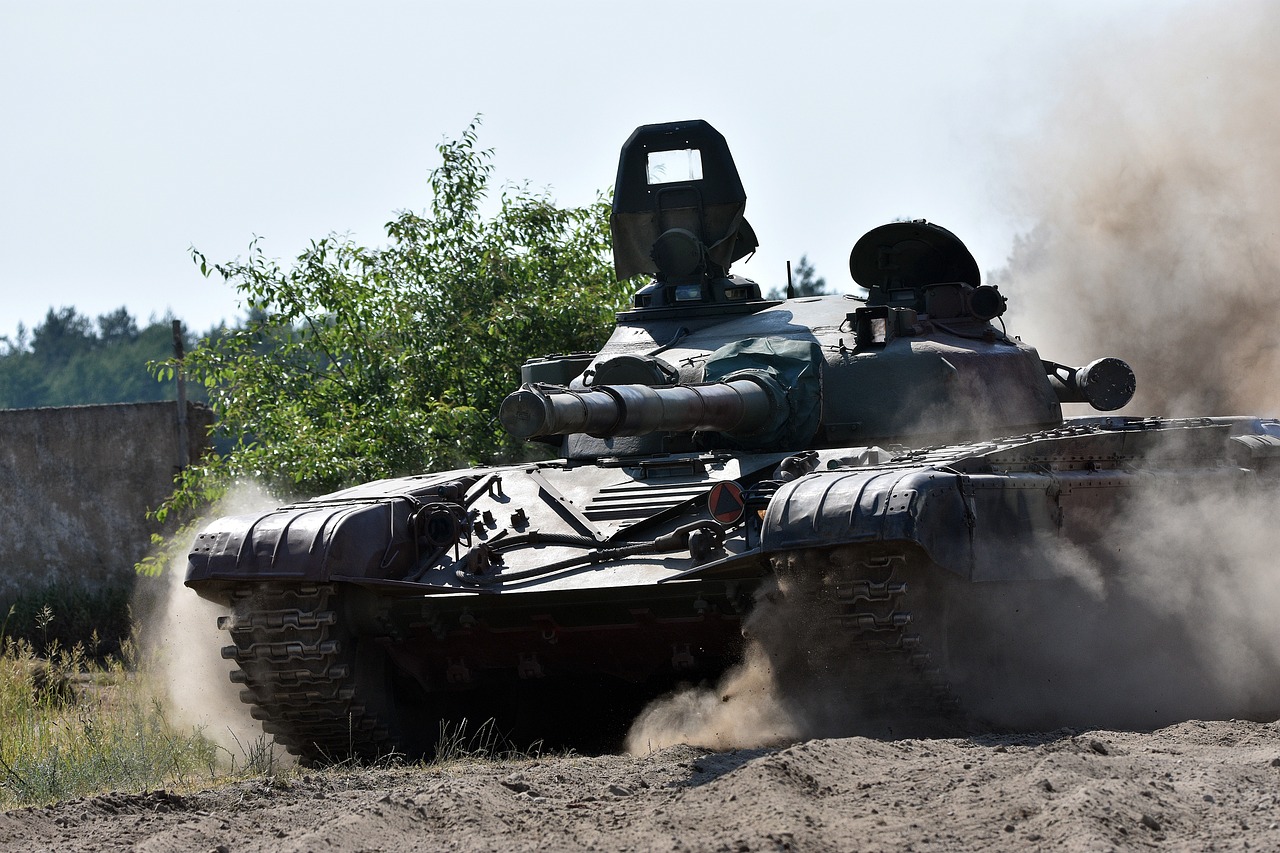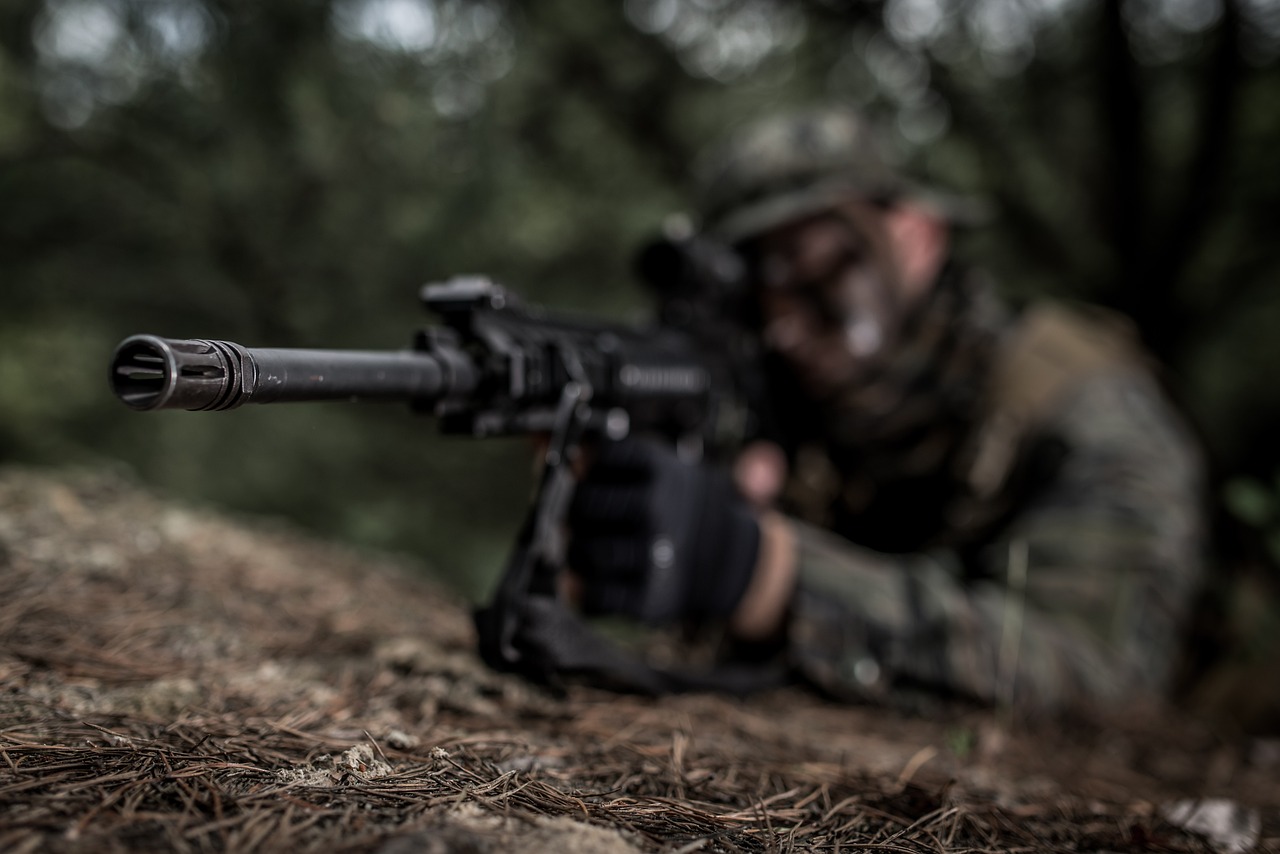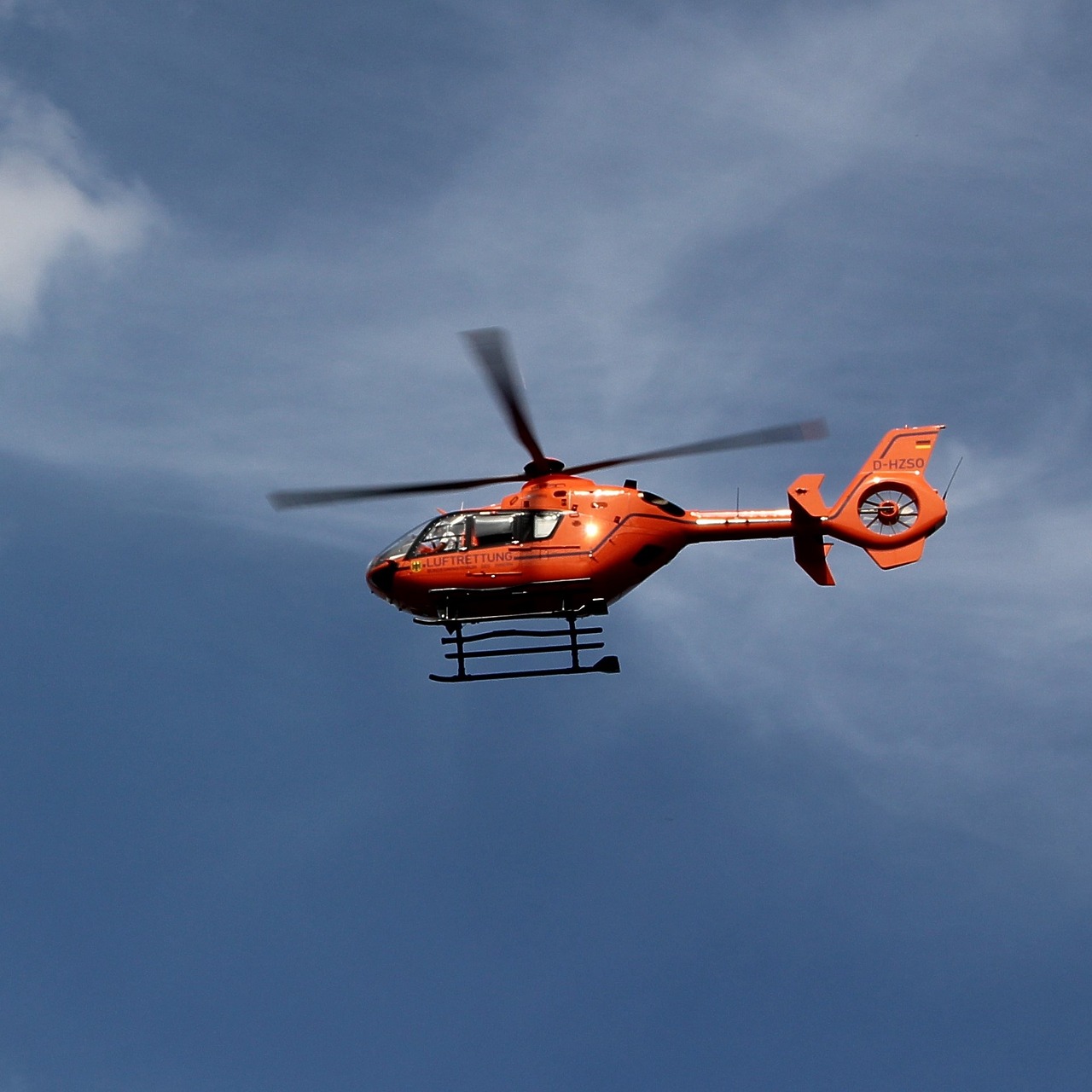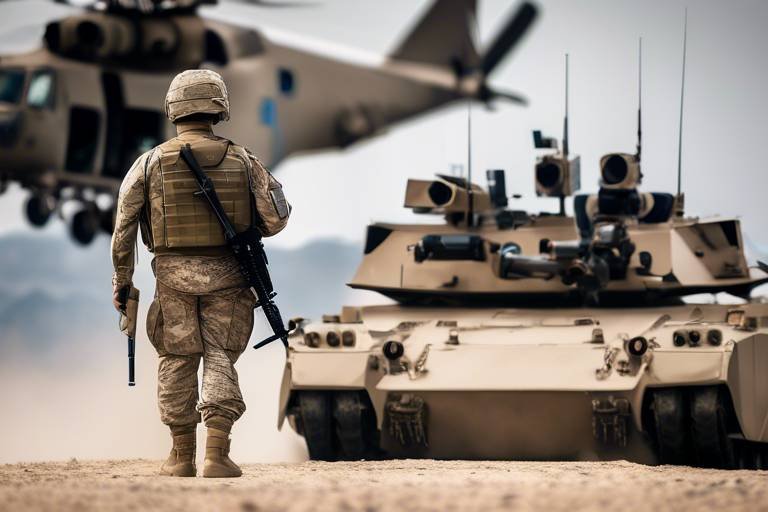The Future of Joint Operations in Complex Security Environments
In an era where global threats are becoming increasingly multifaceted, the landscape of joint military operations is evolving at an unprecedented pace. This evolution is driven by a myriad of factors, including technological advancements, geopolitical shifts, and the pressing need for enhanced collaboration among military forces. The future of joint operations is not just about combining troops from different branches or nations; it's a complex tapestry woven from shared goals, innovative strategies, and a deep understanding of the challenges that lie ahead.
As we delve into this topic, it's essential to recognize that the essence of joint operations is rooted in collaboration. The ability to pool resources, expertise, and intelligence from various military entities can significantly enhance operational effectiveness. Imagine a symphony orchestra where each musician plays a different instrument, yet together they create a harmonious piece. Similarly, joint operations allow diverse military forces to work in concert, leading to improved strategic outcomes in complex security situations.
However, this collaboration does not come without its hurdles. The complexities of modern warfare demand not only advanced technology but also a profound understanding of the operational environment. As military leaders navigate these challenges, they must embrace a mindset of adaptability and innovation. The future of joint operations is a dynamic landscape, where the ability to pivot and respond to evolving threats will be paramount.
Moreover, the integration of emerging technologies is set to redefine how joint operations are conducted. From artificial intelligence (AI) to advanced drone capabilities, these innovations are transforming the battlefield. For instance, AI can process vast amounts of data in real-time, providing commanders with actionable insights that were previously unimaginable. This capability allows for faster decision-making and enhanced situational awareness, which are critical in high-stakes environments.
As we look forward, the importance of regular training and exercises cannot be overstated. These activities not only enhance interoperability among diverse military forces but also prepare them for the complexities of joint operations. Simulated environments, for example, offer realistic training scenarios that can mirror potential challenges on the battlefield. By engaging in these exercises, military personnel can hone their skills and improve their ability to work together seamlessly.
In conclusion, the future of joint operations in complex security environments is a multifaceted challenge that requires a commitment to collaboration, innovation, and adaptability. As military forces around the world continue to evolve, the ability to work together effectively will be the cornerstone of success in addressing the myriad threats that lie ahead.
- What are joint operations? Joint operations refer to military actions conducted by multiple branches of the armed forces or by forces from different nations working together to achieve a common goal.
- Why are joint operations important? They enhance military effectiveness by leveraging the strengths and capabilities of various forces, leading to improved strategic outcomes in complex security situations.
- How is technology impacting joint operations? Emerging technologies like artificial intelligence, drones, and cyber capabilities are revolutionizing how military forces collaborate and execute missions.
- What role does training play in joint operations? Regular training and exercises are essential for enhancing interoperability and readiness among diverse military forces, preparing them for real-world challenges.

The Importance of Joint Operations
Joint operations play a critical role in enhancing military effectiveness, particularly in today's complex security environments. When different branches of the military—be it the Army, Navy, Air Force, or even allied nations—come together, they create a formidable force that can tackle multifaceted challenges. Imagine a symphony orchestra: each musician brings their unique instrument and skill, but it’s the collaboration that produces a harmonious and powerful performance. Similarly, joint operations allow for the pooling of resources and expertise, leading to improved strategic outcomes.
In the face of modern threats, ranging from terrorism to cyber warfare, the need for collaboration is more pressing than ever. The complexities of these security challenges require a unified approach, where the strengths of one branch can complement the weaknesses of another. For instance, while ground troops excel in close combat, aerial support can provide critical reconnaissance and firepower from above. This dynamic interplay not only enhances operational effectiveness but also ensures that military forces can respond swiftly to evolving situations.
Moreover, joint operations foster a sense of interoperability among different military units. This interoperability is crucial in ensuring that forces can work seamlessly together, even when they come from different nations or branches. To illustrate this point, consider the following benefits of joint operations:
- Resource Optimization: By sharing assets, such as intelligence and technology, military forces can maximize their operational capabilities.
- Increased Flexibility: Joint operations allow for rapid adjustments in strategy and tactics, making it easier to adapt to unforeseen circumstances.
- Enhanced Training: Working together in joint exercises helps build trust and familiarity among forces, leading to better performance in real-world scenarios.
Furthermore, the importance of joint operations extends beyond mere tactical advantages. It also plays a vital role in political and diplomatic relations among nations. When countries collaborate on military operations, they strengthen their alliances and build mutual trust. This cooperation can lead to more stable international relations and a collective approach to global security challenges. In essence, joint operations are not just about military might; they are about fostering partnerships that can lead to lasting peace and security.
In summary, the importance of joint operations in complex security environments cannot be overstated. By enhancing military effectiveness, promoting interoperability, and strengthening international partnerships, joint operations pave the way for a more secure future. As we continue to face new threats and challenges, the collaborative efforts of military forces will be essential in safeguarding peace and stability around the globe.

Technological Advancements in Joint Operations
In the ever-evolving landscape of military operations, technological advancements have become the cornerstone of effective joint operations. These innovations are not just enhancing existing capabilities but are fundamentally transforming how military forces collaborate and execute missions across complex security environments. From artificial intelligence to advanced drone technology, the integration of cutting-edge tools is enabling unprecedented levels of coordination and efficiency among different branches of the military and allied nations.
One of the most significant breakthroughs has been the rise of artificial intelligence (AI). AI is revolutionizing the decision-making process, allowing military leaders to analyze vast amounts of data in real-time, which leads to quicker and more informed choices. Imagine having a digital assistant that can sift through mountains of intelligence reports, identifying patterns and potential threats in seconds—this is the power of AI in joint operations. By enhancing situational awareness, AI allows forces to respond to dynamic battlefield conditions more effectively, ultimately improving mission outcomes.
AI integration in joint operations goes beyond mere data processing. It encompasses various applications, such as predictive modeling and automated systems that can assist in logistics and resource management. For instance, AI algorithms can forecast supply needs based on mission parameters, ensuring that troops have the necessary equipment and provisions when they need them. This level of foresight is crucial in maintaining operational readiness and effectiveness.
Another vital aspect of technological advancements is the ability to share and analyze data across different military branches. Effective data sharing can significantly enhance joint operations, as it allows for a unified approach to intelligence and strategy. However, challenges such as incompatible systems and security concerns often hinder seamless data integration. Solutions like standardized communication protocols and secure cloud platforms are being developed to overcome these obstacles, ensuring that all parties have access to the same critical information.
Predictive analytics is another game-changer in military strategy. By utilizing historical data and advanced algorithms, military leaders can anticipate potential threats and operational outcomes. This capability allows for proactive planning, enabling forces to prepare for various scenarios before they unfold. The use of predictive analytics not only improves the effectiveness of joint missions but also minimizes risks to personnel and resources.
As joint operations increasingly rely on these advanced technologies, cybersecurity threats also escalate. Protecting sensitive information and communication channels is paramount in maintaining operational integrity. Cyberattacks can disrupt joint missions, compromise intelligence, and even lead to catastrophic failures. Therefore, robust cybersecurity measures must be an integral part of any joint operation strategy, ensuring that all technological tools are safeguarded against potential threats.
In summary, the technological advancements shaping joint operations are both exciting and challenging. As military forces continue to integrate AI, data sharing, predictive analytics, and cybersecurity measures, they are not only enhancing their operational capabilities but also setting the stage for more effective and collaborative military efforts in the future.
- What role does AI play in joint military operations? AI enhances decision-making, situational awareness, and logistics management by processing large volumes of data quickly.
- How does data sharing improve joint operations? It allows for a unified approach to intelligence and strategy, ensuring all branches have access to critical information.
- What are some cybersecurity challenges faced in joint operations? Cybersecurity threats can disrupt missions and compromise sensitive information, making robust protection essential.

Artificial Intelligence Integration
In the rapidly evolving landscape of military operations, artificial intelligence (AI) is emerging as a game-changer. Imagine having a super-intelligent assistant that can analyze vast amounts of data in seconds, making recommendations that could save lives and resources. This is not just a futuristic dream; it is becoming a reality in joint operations. AI integration allows military forces to enhance decision-making processes, improve situational awareness, and streamline coordination among various branches and allied nations.
One of the most significant advantages of AI in joint operations is its ability to process and interpret data faster than any human could. With the increasing complexity of modern warfare, the sheer volume of information generated during operations can be overwhelming. AI algorithms can sift through this data, identifying patterns and anomalies that might go unnoticed by human analysts. For instance, during joint military exercises, AI can analyze real-time communication and operational data to provide commanders with actionable insights, allowing them to make informed decisions on the fly.
Furthermore, AI is not just about speed; it’s also about precision. By utilizing machine learning techniques, military planners can create models that predict the outcomes of various strategies based on historical data. This predictive capability enables forces to anticipate potential threats and adjust their tactics accordingly. For example, if a joint operation is planned in a high-risk area, AI can analyze past incidents and current intelligence to forecast possible enemy movements, allowing commanders to devise more effective strategies.
Moreover, AI's role extends beyond just tactical advantages. It also enhances logistical operations, ensuring that troops have the supplies and resources they need when they need them. AI systems can optimize supply chains, predicting demand and managing inventory levels in real-time. This capability is crucial in joint operations where multiple nations contribute resources, as it ensures that all forces are adequately supported without unnecessary delays.
However, integrating AI into military operations is not without its challenges. Concerns about data security and the ethical implications of using autonomous systems are paramount. As military operations become increasingly reliant on AI, safeguarding sensitive information from cyber threats is essential. Additionally, the potential for AI systems to make autonomous decisions raises questions about accountability and the rules of engagement. These issues must be addressed to ensure that AI is used responsibly and effectively in joint operations.
In conclusion, the integration of artificial intelligence into joint military operations represents a significant leap forward in enhancing operational effectiveness. By improving decision-making, predicting outcomes, and optimizing logistics, AI is transforming how military forces collaborate and execute missions. As we move forward, it will be crucial to navigate the challenges that come with this integration to fully harness the potential of AI in complex security environments.
- What is the role of AI in joint military operations? AI enhances decision-making, improves situational awareness, and streamlines logistics in military operations.
- How does AI improve data analysis? AI can process vast amounts of data quickly, identifying patterns and providing actionable insights that human analysts might miss.
- What are the ethical concerns surrounding AI in military use? Key concerns include data security, accountability for autonomous decisions, and the potential for misuse of AI technologies.
- Can AI predict military outcomes? Yes, AI can analyze historical data and current intelligence to forecast potential threats and operational outcomes.

Data Sharing and Analysis
In the realm of joint military operations, effective data sharing and analysis stand as the backbone of successful collaboration. Imagine a symphony orchestra where each musician plays a different instrument; without proper coordination and communication, the music would be dissonant rather than harmonious. Similarly, in military operations, various branches and nations must share critical information seamlessly to achieve a unified goal. However, the path to efficient data sharing is fraught with challenges. Issues such as differing data formats, security concerns, and varying levels of technological advancement can create barriers that hinder collaboration.
To overcome these challenges, military leaders are increasingly focusing on developing robust data integration frameworks. These frameworks not only facilitate the sharing of intelligence but also ensure that the information is analyzed effectively. With the right tools and protocols in place, data can flow freely between units, allowing for real-time updates and situational awareness. For instance, a recent initiative implemented a standardized data format across multiple branches, which significantly reduced the time required for intelligence sharing and improved operational readiness.
Moreover, the ability to analyze data quickly is essential in making informed decisions during operations. Advanced analytics tools can sift through vast amounts of information, identifying patterns and providing insights that might not be immediately obvious. This capability is akin to having a skilled detective who can piece together clues to solve a complex case. For joint operations, predictive analytics can forecast potential threats and operational outcomes, allowing military leaders to adapt their strategies proactively.
| Data Sharing Challenges | Potential Solutions |
|---|---|
| Differing Data Formats | Implementing standardized data protocols |
| Security Concerns | Enhancing cybersecurity measures and encryption |
| Technological Disparities | Investing in joint training and technology upgrades |
In conclusion, the significance of data sharing and analysis in joint operations cannot be overstated. As military forces continue to evolve and adapt to complex security environments, the ability to share and analyze data effectively will be a critical determinant of success. By addressing the challenges head-on and leveraging technology for better communication and analysis, military leaders can enhance operational efficiency and ensure that their forces are prepared for any scenario.
- What is the importance of data sharing in joint operations?
Data sharing enhances situational awareness and enables faster decision-making, which is crucial for the success of joint military missions. - What challenges are faced in data sharing?
Challenges include differing data formats, security concerns, and varying technological capabilities among military branches. - How can predictive analytics benefit military operations?
Predictive analytics can identify potential threats and operational outcomes, aiding in strategic planning and execution. - What role does cybersecurity play in data sharing?
Cybersecurity is vital to protect sensitive information and communication channels, ensuring that data shared among forces remains secure.

Predictive Analytics in Operations
In today's rapidly changing military landscape, predictive analytics has emerged as a game-changer in operational planning and execution. Imagine having the ability to foresee potential threats and operational outcomes before they even materialize. This is not just a futuristic concept; it's a reality that military leaders are harnessing to enhance their strategic decision-making capabilities. By leveraging vast amounts of data, predictive analytics allows commanders to anticipate enemy movements, optimize resource allocation, and improve mission success rates.
At the heart of predictive analytics is the ability to analyze historical data and identify patterns that can indicate future events. For instance, by examining previous conflict scenarios, military analysts can develop models that predict how different variables—such as troop movements, weather conditions, and geopolitical tensions—might affect upcoming operations. This proactive approach enables military planners to craft more effective strategies, ensuring that forces are prepared for a variety of contingencies.
Moreover, predictive analytics can significantly enhance situational awareness. When combined with real-time data feeds from various sources—such as satellite imagery, drone surveillance, and intelligence reports—military leaders can create a comprehensive picture of the battlefield. This integration of data not only aids in decision-making but also allows for rapid adjustments to plans as new information becomes available. For example, if predictive models indicate an increased likelihood of hostile activity in a specific area, units can be repositioned accordingly, thereby mitigating risks and enhancing operational effectiveness.
However, implementing predictive analytics in military operations is not without its challenges. Data quality and integration remain significant hurdles. Different branches of the military often use disparate systems and formats, making it difficult to compile and analyze data cohesively. To address this, initiatives are underway to standardize data collection and sharing practices across branches, ensuring that predictive analytics can be applied effectively across all levels of command.
In summary, the integration of predictive analytics into military operations is transforming how forces prepare for and respond to complex security challenges. By harnessing the power of data, military leaders can make informed decisions that not only enhance operational readiness but also save lives. As technology continues to evolve, the potential for predictive analytics in joint operations will only expand, paving the way for a more agile and responsive military force.
- What is predictive analytics in military operations? Predictive analytics involves using historical data and statistical algorithms to identify patterns and forecast future outcomes, helping military leaders make informed decisions.
- How does predictive analytics enhance situational awareness? By integrating real-time data with predictive models, military leaders can gain a comprehensive understanding of the battlefield, allowing for rapid decision-making and adjustments to plans.
- What challenges exist in implementing predictive analytics? Challenges include data quality, integration across different military branches, and the need for standardized data collection practices.
- What are the benefits of using predictive analytics? Benefits include improved strategic planning, enhanced operational readiness, and increased chances of mission success by anticipating potential threats.

Cybersecurity Challenges
In today's rapidly evolving military landscape, the integration of advanced technology into joint operations has brought about a myriad of . As military forces increasingly rely on digital communication and information sharing, the potential for cyber threats has escalated dramatically. Imagine a high-stakes operation where a single data breach could compromise not only mission success but also the safety of personnel involved. This is the harsh reality that military leaders must navigate.
One of the primary challenges is the protection of sensitive information. With various branches of the military and allied nations collaborating, the flow of information is more extensive than ever. This interconnectedness, while beneficial, opens up multiple avenues for cyber adversaries to exploit vulnerabilities. For instance, consider the following points:
- Increased Attack Surface: The more systems and networks involved, the greater the risk of an attack. Each connection can be a potential entry point for hackers.
- Data Integrity Issues: Ensuring that the information shared between different military units is accurate and untampered is crucial. Any alteration could lead to disastrous outcomes.
- Real-Time Threats: Cyber threats can evolve rapidly, requiring military forces to be on constant alert and adapt their defenses in real-time.
Moreover, the lack of standardized cybersecurity protocols across different nations and branches can lead to significant gaps in defense. Each military unit may have its own set of security measures, and without a unified approach, the potential for miscommunication and oversight increases. This fragmentation can create a scenario where even the most secure systems are vulnerable due to a lack of cohesive strategy.
To combat these challenges, military organizations are investing heavily in cybersecurity training and infrastructure. They are recognizing that the human element is often the weakest link in the security chain. By improving awareness and understanding of cybersecurity best practices among personnel, the risks associated with human error can be significantly reduced. Additionally, adopting cutting-edge technologies such as artificial intelligence for threat detection and response can enhance the overall security posture.
In summary, while the integration of technology in joint operations offers remarkable advantages, it also necessitates a robust cybersecurity framework. As military forces continue to adapt to this digital age, addressing these cybersecurity challenges will be paramount to ensuring the success and safety of joint operations.
- What are the main cybersecurity threats faced by military operations? Cybersecurity threats can include hacking, data breaches, phishing attacks, and ransomware, all of which can compromise sensitive military information.
- How can military forces improve their cybersecurity measures? By investing in training, adopting standardized protocols, and utilizing advanced technologies such as AI for threat detection, military forces can enhance their cybersecurity posture.
- Why is data integrity important in joint operations? Data integrity ensures that the information shared between military units is accurate and reliable, which is crucial for making informed decisions during operations.

Training and Exercises for Joint Operations
In today’s rapidly evolving security landscape, regular training and exercises are not just beneficial; they are essential for the effectiveness of joint operations. The complexity of modern military engagements demands that forces from different branches and nations work together seamlessly. This requires a high level of preparedness, which can only be achieved through rigorous and realistic training scenarios. Think of it like a sports team; the more they practice together, the better they understand each other's strengths and weaknesses, leading to a cohesive unit on the field.
Joint exercises serve multiple purposes, from enhancing interoperability to refining communication protocols. By bringing together diverse military forces, these exercises foster an environment where soldiers, airmen, and sailors can learn to operate in unison, regardless of their service branch. Imagine a symphony orchestra, where each musician plays a different instrument but must work together to create beautiful music. Similarly, joint military exercises aim to harmonize the efforts of various forces into a single, effective operation.
One of the most significant benefits of joint training is the opportunity to address and overcome interoperability challenges. This involves establishing common standards and protocols that all participating forces can follow. For instance, the NATO alliance has developed interoperability standards that help member nations coordinate their efforts during joint missions. These standards cover various aspects, including communication systems, logistics, and operational procedures. By adhering to these guidelines, forces can ensure that they can work together without a hitch.
Moreover, simulated environments play a pivotal role in preparing military units for real-world scenarios. These environments allow for the replication of complex security challenges without the risks associated with live operations. For example, advanced simulation technologies can create virtual battlefields where troops can practice their responses to various threats, from cyber-attacks to unconventional warfare tactics. This not only enhances readiness but also enables forces to experiment with new strategies in a controlled setting.
To further illustrate the importance of training and exercises, consider the following table showcasing various types of joint exercises that military forces commonly engage in:
| Type of Exercise | Description | Purpose |
|---|---|---|
| Tabletop Exercises | Scenario-based discussions among command staff | Strategic planning and decision-making |
| Live Exercises | Full-scale operations involving troops and equipment | Testing operational capabilities in real-time |
| Virtual Simulations | Computer-generated environments for training | Practicing tactics and strategies without physical risks |
Additionally, the frequency of these exercises is crucial. Military leaders often emphasize the need for consistent practice to maintain readiness. Just like athletes who train year-round to stay competitive, military units must engage in joint exercises regularly to ensure they are prepared for any situation. This commitment to training not only builds confidence among troops but also strengthens the bonds between allied forces, making them more effective in the field.
In conclusion, the landscape of joint operations is ever-changing, and the need for comprehensive training and exercises cannot be overstated. By continually honing their skills and fostering collaboration among different military branches, forces can enhance their operational effectiveness and readiness for the complexities of modern warfare. As we move forward, embracing innovative training methods will be key to overcoming the challenges of joint operations in complex security environments.
- Why are joint operations important? Joint operations enhance military effectiveness by combining resources and expertise across different branches and nations.
- What types of training are used for joint operations? Common types include tabletop exercises, live exercises, and virtual simulations, each serving different training purposes.
- How do simulated environments benefit military training? They provide realistic scenarios for troops to practice in a safe, controlled setting, preparing them for real-world challenges.
- What role do interoperability standards play? They ensure that forces from different nations can work together seamlessly, improving coordination and effectiveness during joint missions.

Simulated Environments for Training
In the ever-evolving landscape of military operations, simulated environments have emerged as crucial tools for training. These environments serve as a digital playground where military forces can hone their skills without the risks associated with live exercises. Imagine stepping into a virtual world that mimics the chaos of real combat, complete with unpredictable variables and realistic scenarios. This is precisely what simulated training environments offer, allowing soldiers to experience the pressures of joint operations in a safe and controlled setting.
One of the primary advantages of using simulated environments is the ability to conduct realistic training scenarios that reflect current threats and challenges. By integrating advanced technologies such as virtual reality (VR) and augmented reality (AR), military personnel can engage in exercises that closely resemble actual missions. This not only enhances their tactical skills but also improves their decision-making abilities under pressure. For example, a unit may participate in a simulated operation that involves coordinating with air support while navigating through an urban environment, all while facing simulated enemy forces.
Furthermore, simulated environments allow for repetitive practice, which is essential for skill retention and mastery. Unlike traditional training methods that may require extensive resources and time, simulations can be repeated as often as necessary. This means that soldiers can refine their techniques and strategies continuously, leading to greater proficiency in joint operations. The flexibility of these environments also means that training can be tailored to specific needs, whether it's focusing on communication between branches or mastering new technologies.
Despite the numerous benefits, it’s important to recognize that simulated training environments are not without their challenges. One significant hurdle is ensuring that simulations accurately reflect the complexities of real-world operations. To address this, military leaders must continuously update and enhance simulation software, incorporating feedback from actual missions and exercises. Additionally, there is a need for robust evaluation metrics to assess the effectiveness of training programs and identify areas for improvement.
In conclusion, simulated environments for training are revolutionizing how military forces prepare for joint operations. By providing a safe, adaptable, and realistic training platform, these environments not only enhance individual skills but also foster teamwork and collaboration among diverse military units. As technology continues to advance, we can expect these training tools to become even more sophisticated, ultimately leading to more effective and coordinated military efforts in the field.
- What are simulated environments in military training? Simulated environments are digital platforms that replicate real-world combat scenarios for training purposes, allowing military personnel to practice skills in a safe setting.
- How do simulated environments enhance joint operations training? They provide realistic scenarios, allow for repetitive practice, and help improve decision-making skills under pressure, which are essential for effective joint operations.
- What technologies are used in simulated environments? Technologies such as virtual reality (VR), augmented reality (AR), and advanced simulation software are commonly used to create immersive training experiences.
- Are there any challenges associated with simulated training? Yes, challenges include ensuring the accuracy of simulations and developing robust evaluation metrics to measure training effectiveness.

Interoperability Standards
In the realm of joint military operations, establishing is not just a necessity; it is the backbone that supports successful collaboration among diverse military forces. Imagine trying to assemble a jigsaw puzzle with pieces that don’t fit together—this is precisely what happens when different military units lack common standards. Interoperability ensures that forces from various branches and nations can communicate, share information, and execute missions seamlessly.
To achieve this, military organizations have developed a range of standards and protocols that govern everything from communication systems to operational procedures. These standards facilitate the integration of different technologies and methodologies, creating a unified approach to complex security challenges. For instance, NATO has established a comprehensive set of interoperability standards that member nations are encouraged to adopt. This framework not only enhances operational efficiency but also fosters trust among allies.
Moreover, interoperability standards are not static; they evolve with technological advancements and changing operational environments. Regular assessments are conducted to identify gaps and opportunities for improvement. This proactive approach ensures that military forces remain agile and capable of responding to emerging threats. For example, the integration of new communication technologies necessitates updates to existing standards to accommodate increased data sharing capabilities.
One of the key challenges in establishing interoperability standards is the diversity of military cultures, technologies, and operational doctrines. Each nation has its own set of practices and equipment, which can create friction during joint operations. Therefore, it is essential to engage in continuous dialogue and collaboration to align these differences. Training exercises play a crucial role in this process, providing opportunities for forces to practice together and refine their interoperability skills.
Ultimately, the success of joint operations hinges on the ability of military forces to work together effectively. By prioritizing interoperability standards, nations can enhance their collective security posture and ensure that they are prepared to face the complexities of modern warfare. The commitment to interoperability is not just about efficiency; it symbolizes a shared vision for global security that transcends borders.
- What are interoperability standards?
Interoperability standards are guidelines and protocols that ensure different military forces can work together effectively by facilitating communication and operational compatibility.
- Why are interoperability standards important?
They are crucial for ensuring that military units can collaborate seamlessly during joint operations, ultimately enhancing mission success and operational efficiency.
- How are interoperability standards developed?
Standards are developed through collaboration among military organizations, often incorporating feedback from joint exercises and assessments of technological advancements.
- What challenges exist in achieving interoperability?
Diverse military cultures, technologies, and operational doctrines can create barriers to interoperability, necessitating ongoing dialogue and training.

The Role of International Partnerships
International partnerships are more than just alliances; they are the backbone of effective joint military operations in today's complex security environments. Imagine trying to solve a complex puzzle where each piece represents a different nation’s military capabilities and resources. When these pieces fit together seamlessly, they create a powerful image of cooperative defense and security. However, this collaboration doesn't come without its challenges.
One of the primary advantages of international partnerships is the ability to pool resources and share intelligence. In a world where threats are increasingly transnational, the need for a united front is critical. For instance, countries can share surveillance data, conduct joint training exercises, and develop shared strategies that enhance their collective security posture. This collaboration is often formalized through various treaties and agreements, which lay the groundwork for cooperative defense initiatives.
Moreover, these partnerships foster interoperability among different military forces. When nations work together, they must ensure that their systems, technologies, and procedures are compatible. This is akin to making sure that different pieces of software can communicate with each other; without this compatibility, operations can become disjointed and inefficient. To facilitate this, many countries are establishing interoperability standards, which include:
- Common communication protocols
- Joint training programs
- Shared operational procedures
However, the road to effective multinational collaboration is not without its bumps. Political and cultural differences can create friction. For example, differing military doctrines or national priorities can lead to misunderstandings or conflicting strategies. It's crucial for military leaders to navigate these challenges through open communication and mutual respect. By fostering an environment of trust and understanding, nations can overcome these hurdles and work towards common goals.
Additionally, the role of international partnerships extends beyond just military operations. They also play a pivotal role in humanitarian efforts and disaster response. When a natural disaster strikes, for instance, countries can quickly mobilize resources and personnel to provide aid. This not only saves lives but also strengthens diplomatic ties between nations, further enhancing the overall security environment.
In conclusion, international partnerships are essential in the realm of joint operations. They not only enhance military effectiveness but also contribute to global stability. As we navigate an increasingly complex world, the need for strong alliances and collaborative defense initiatives will only grow stronger. By working together, nations can address shared security challenges and ensure a safer future for all.
- What are the main benefits of international military partnerships? International military partnerships enhance resource sharing, improve interoperability, and strengthen collective defense strategies.
- How do cultural differences impact joint operations? Cultural differences can lead to misunderstandings and conflicts in military strategy, making open communication essential for success.
- What role do treaties play in international military cooperation? Treaties formalize partnerships and establish frameworks for joint operations, resource sharing, and collaborative defense initiatives.

Collaborative Defense Initiatives
In the realm of joint military operations, play a pivotal role in enhancing the effectiveness and efficiency of allied forces. These initiatives are designed to foster cooperation and resource sharing among nations, ultimately leading to improved security outcomes. By pooling resources, sharing intelligence, and coordinating strategies, allied nations can respond more effectively to complex security challenges that transcend national borders.
One of the most notable examples of collaborative defense initiatives is the NATO (North Atlantic Treaty Organization). This alliance has been instrumental in facilitating joint operations among member countries, allowing them to conduct training exercises, share intelligence, and develop integrated defense strategies. NATO's emphasis on collective defense ensures that an attack on one member is considered an attack on all, thus fostering a strong sense of unity and purpose.
Moreover, various bilateral and multilateral agreements have been established to enhance military cooperation. For instance, the Five Eyes alliance, comprising Australia, Canada, New Zealand, the United Kingdom, and the United States, exemplifies how countries can work together to share intelligence and conduct joint operations. This alliance not only streamlines communication but also enhances the analytical capabilities of member nations by providing access to a broader pool of information.
In addition to traditional military alliances, emerging collaborative defense initiatives focus on cybersecurity and emerging technologies. As cyber threats become increasingly sophisticated, nations are recognizing the need for collective defense measures in the digital realm. Initiatives such as the Cybersecurity and Infrastructure Security Agency (CISA) in the United States promote collaboration between government and private sectors to safeguard critical infrastructure from cyberattacks.
Furthermore, joint exercises and training programs are essential components of these initiatives. They ensure that forces from different nations can operate seamlessly together, enhancing their ability to respond to crises. For example, the RIMPAC (Rim of the Pacific Exercise) is the world's largest international maritime exercise, involving numerous countries working together to enhance interoperability and readiness for maritime operations. Such exercises not only build trust among allies but also provide a platform for sharing best practices and lessons learned.
Despite the numerous benefits, collaborative defense initiatives are not without challenges. Political and cultural differences among nations can create friction, potentially hindering effective cooperation. To mitigate these issues, it is crucial for nations to engage in open dialogue, build mutual trust, and establish clear communication channels. By addressing these challenges head-on, countries can strengthen their collaborative efforts and enhance their collective security.
In conclusion, collaborative defense initiatives are vital for the success of joint military operations in today's complex security environment. As nations face an array of global threats, the ability to work together, share resources, and develop integrated strategies will be paramount. Through initiatives like NATO, the Five Eyes alliance, and various joint exercises, countries can enhance their operational capabilities, ensuring a more secure future for all.
- What are collaborative defense initiatives? Collaborative defense initiatives are agreements and programs designed to foster cooperation and resource sharing among allied nations to enhance military effectiveness and security.
- How does NATO contribute to joint operations? NATO facilitates joint operations by promoting collective defense, conducting training exercises, and sharing intelligence among member countries.
- What challenges do multinational collaborations face? Multinational collaborations can face challenges such as political differences, cultural misunderstandings, and communication barriers that can hinder effective cooperation.
- What is RIMPAC? RIMPAC, or the Rim of the Pacific Exercise, is the world's largest international maritime exercise, involving numerous countries to enhance interoperability and readiness for maritime operations.

Challenges of Multinational Collaboration
When it comes to multinational collaboration in joint military operations, the road is often paved with unique challenges that can make or break the success of a mission. Think about it: when different nations come together, they bring not just their troops and equipment, but also their distinct cultures, languages, and operational philosophies. This melting pot of military forces can lead to extraordinary outcomes, but it can also spark misunderstandings and inefficiencies. So, what are these challenges that we need to navigate?
One of the primary hurdles is the political landscape. Each nation has its own political agenda, which can complicate decision-making processes. For instance, a country might be hesitant to engage in a particular operation due to domestic political pressures or international relations. This can lead to delays and even a lack of commitment to joint missions, which is detrimental when time is of the essence.
Another significant challenge is language barriers. Effective communication is critical in military operations, and when personnel speak different languages, misunderstandings can arise. Imagine trying to coordinate a complex maneuver where every second counts, but orders are misinterpreted due to a simple language difference. This is why many forces invest in language training and translation technology, but it’s still a hurdle that can’t be entirely eliminated.
Moreover, cultural differences play a vital role in how military forces operate. Each nation’s military has its own traditions, values, and operational styles. For example, what is considered standard protocol in one country may be viewed as overly aggressive or too passive in another. This divergence can create friction and misunderstandings, making it essential for military leaders to foster an environment of respect and understanding among different forces.
Additionally, logistical challenges cannot be overlooked. Coordinating the movement of troops, equipment, and supplies across borders requires meticulous planning and cooperation. Issues such as differing regulations, customs procedures, and transportation capabilities can lead to significant delays. To mitigate these issues, nations often establish joint logistics teams that work together to streamline processes and ensure that everything runs smoothly.
To sum it up, while multinational collaboration in joint operations can yield remarkable results, it is fraught with challenges that require careful management. By recognizing these hurdles—political, linguistic, cultural, and logistical—military leaders can develop strategies to overcome them, paving the way for successful joint missions.
- What are the main challenges of multinational military collaboration?
The primary challenges include political differences, language barriers, cultural discrepancies, and logistical issues. - How can language barriers be overcome in joint operations?
Language barriers can be addressed through language training, employing translators, and using technology to facilitate communication. - Why is cultural understanding important in joint military operations?
Cultural understanding helps in minimizing misunderstandings and fosters a cooperative environment, which is crucial for mission success. - What role does logistics play in multinational military operations?
Logistics is essential for the effective movement and coordination of troops and supplies, requiring thorough planning and collaboration.
Frequently Asked Questions
- What are joint operations in military contexts?
Joint operations refer to military actions conducted by multiple branches of the armed forces, such as the army, navy, and air force, working together to achieve a common goal. This collaboration enhances overall effectiveness and improves strategic outcomes in complex security environments.
- How does technology impact joint operations?
Technology plays a crucial role in transforming joint operations. Innovations like artificial intelligence, drones, and advanced cyber capabilities enable faster decision-making, improved situational awareness, and more efficient resource sharing among military units, ultimately leading to more successful missions.
- What is the significance of artificial intelligence in joint operations?
Artificial intelligence (AI) is pivotal in joint operations as it helps military leaders analyze vast amounts of data, predict threats, and enhance coordination among different forces. By leveraging AI, military operations can become more agile and responsive to changing conditions on the battlefield.
- Why is data sharing important in joint military efforts?
Effective data sharing is essential for successful joint operations because it allows different military branches to access and analyze critical information in real-time. Overcoming challenges related to data integration ensures that all units are on the same page, leading to better strategic planning and execution.
- What challenges do joint operations face regarding cybersecurity?
As joint operations increasingly rely on technology, they become more vulnerable to cybersecurity threats. Protecting sensitive information and communication channels is vital to maintaining operational security and ensuring that collaborative efforts are not compromised by external attacks.
- How do training and exercises enhance joint operations?
Regular training and exercises are crucial for improving interoperability and readiness among diverse military forces. These activities help units practice working together in simulated environments, which prepares them for real-world challenges and fosters seamless cooperation during joint missions.
- What role do international partnerships play in joint operations?
International partnerships are key to enhancing joint operations, as they foster collaboration among allied nations. These alliances contribute to shared security goals, resource sharing, and operational success in complex security environments, making joint efforts more effective.
- What are some common challenges of multinational collaboration?
Multinational collaboration can present unique challenges, such as political and cultural differences among partner nations. Addressing these challenges is essential to ensure effective joint operations, requiring open communication, mutual respect, and a focus on shared objectives.



















